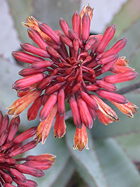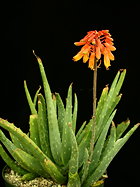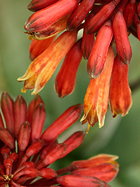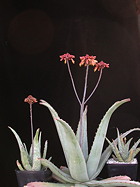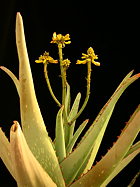A. sinkatana has proven to be one of the most useful small landscape aloes. The two commonly cultivated forms and the A. sinkatana hybrid named A. ‘Rooikappie’ (ISI 2004-13) share some of the species’ best qualities: small stature with rosettes to about 30 cm across, clean, attractively spotted foliage resistant to blemishes, and repeat blooming with capitate inflorescences. However, the limited gene pool in cultivation gives an incomplete picture of the species’ variability. An expedition (members included S Linden, G Barad, S Carter and D Plowes) to the Sudan in Nov 1997 sampled a population at the base of Jebel Awliyi in the Red Sea Hills, three specimens of which are grown at the Huntington. This collection revealed intriguing variations. All have proven to be repeat-bloomers but with a range of vegetative and floral characteristics. We offer seedlings from controlled pollination in various combinations of these three clones: HBG 82338 (caespitose with erect maculate foliage and orange flowers), HBG 82341 (larger solitary rosette, glaucous with reddish teeth and margins and red buds opening mottled orange) and HBG 82380 (larger solitary, glaucous rosette with reddish teeth and margins and yellow flowers). HBG 104174. $10.
Our offering was from controlled pollination of three plants that displayed a range of variation from glaucous, solitary rosettes to caespitose and spotted. Flowers too varied from red buds opening speckled orange, to solid orange or yellow. Reference was made to two commonly cultivated forms, both of which are caespitose with spotted foliage, and bear either orange or yellow flowers. These latter forms, and one of the plants from which ISI 2005-10 were produced, seem to fit the recently described (Cactus World 33, No. 1, March, 2015) Aloe zubb T.A.McCoy & Lavranos, a species said to be restricted to the higher elevation fog zone around Erkowit, Sudan. Sinkat, the type locality of A. sinkatana, is located at lower elevation and is therefore hotter and drier. Here, the aloes are larger and solitary with erect, unspotted leaves, like the plant used to illustrate ISI 2005-10 in the Journal. This plant matches the original description of A. sinkatana. All three parents of ISI 2005-10 were collected from the same locality at the base of Jebel Awliyi, illustrated above. Each shows a different combination of features. The one illustrated in the Journal as well as here on this web page is solitary with erect, glaucous, unspotted foliage with red buds opening speckled orange. It matches well with the description of A. sinkatana. Another is caespitose with spotted foliage and orange flowers and matches the new A. zubb. The third is solitary with erect, spotted foliage and yellow flowers. This may represent a hybrid of the two. The explanation for all three growing together? Apparently, the base of Jebel Awliyi is the site of an old cemetary into which locals seem to have transplanted various aloes from the surrounding area and these have subsequently hybridized. The seedlings distributed by the ISI, then, may be hybrids as well.
2023 Epilogue: Our current crop of seedlings is from a cross of two of the three parents of the original ISI offering, eliminating the one that was clearly Aloe zubb. The parent with yellow flowers and slightly spotted leaves has remained solitary all these years suggesting that it may be pure Aloe sinkatana.
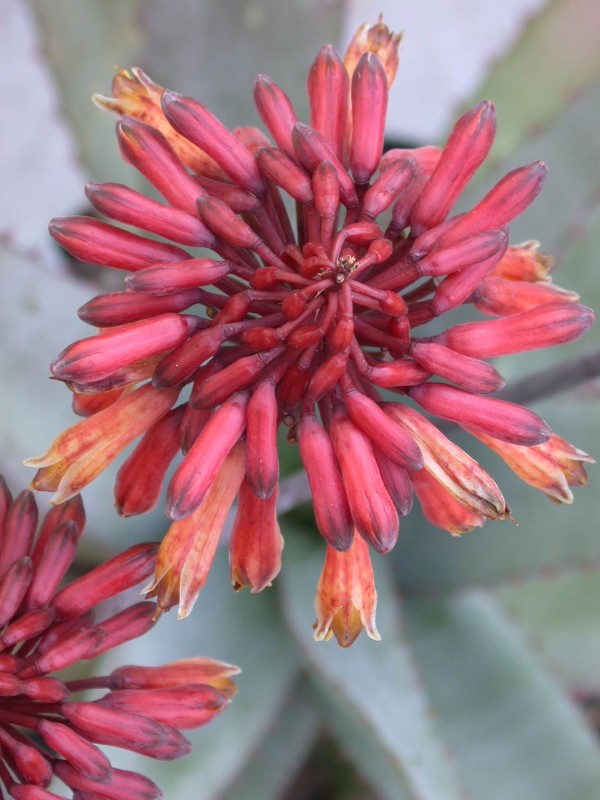
Published in the Cactus and Succulent Journal, Vol. 77 (2), March - April, 2005
